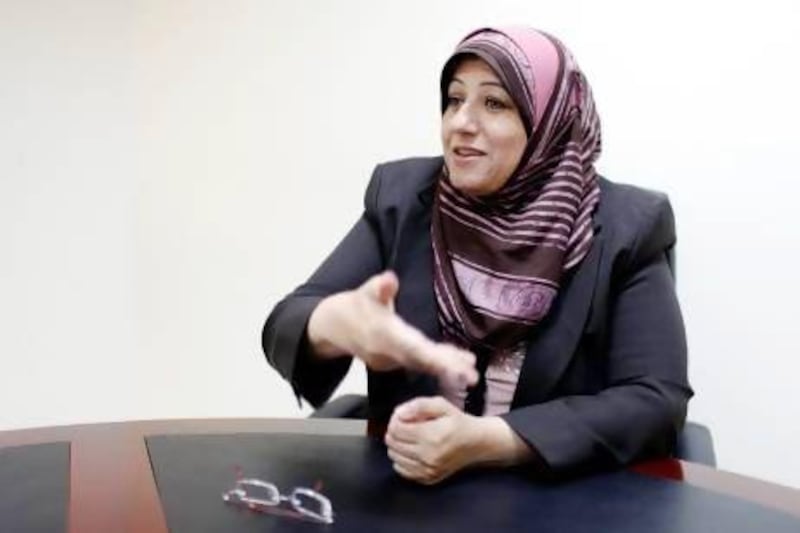DUBAI // Three-quarters of young Emiratis suffer with body issues, and one in five of those need clinical intervention, a study suggests.
The number of sufferers from anorexia and bulimia has increased in recent years, mainly among teenage girls, said Sana Karim, head of student counselling at the Ministry of Education.
While ministry psychologists visit schools to deal with behavioural issues, including eating disorders, she said it was vital for parents and teachers to look for the signs.
“There are certain symptoms you can see as to whether a child is well or not,” she said. “Early on, parents notice children’s habits and teachers see them in class. Some students may seem sleepy in class or may struggle to focus.”
Dr Justin Thomas, from Zayed University, and Sabrina Tahboub-Schoult, from the American University of Sharjah, found the alarming results during a study of 361 undergraduates – 284 women and 77 men.
Their paper has just been accepted by the journal Eating Disorders.
The researchers pinned much of problem on rapid social change, which has affected men and women almost equally. That was a surprise; the team had expected male participants to be less affected.
“Social change brings uncertainty, and eating disorders appear to increase in prevalence as societies move through major sociocultural transitions,” said Dr Thomas.
Mrs Karim said that in addition to the pressure of the “ideal body” on television and in magazines, social change has disrupted family life.
A former school counsellor, she said girls do not eat “because they are afraid of getting fat” and since “families rarely sit down to eat together like they once did” it is almost impossible to monitor a child’s eating habits.
“Mothers and fathers also work, so the child comes home from school at 1pm or 2pm, and the parents aren’t home until much later,” she said. Mrs Karim also pointed to the many families in which a nanny is the primary carer.
Healthcare workers in schools are trying to better educate students about the difference between being thin and being healthy, with reading materials, talks by visiting health professionals and in science curriculums.
“Schools are banning certain things such as fizzy drinks from the cafeterias, and some are trying to give them better meals at specific times in the middle of the school day. Some schools have tried this and it’s proved successful,” Mrs Karim said.
Social cohesion also played a role, said Mrs Karim. “It’s like the way they dress,” she said. “It’s a pattern between friends. They discover a new pattern and try to follow it.”
The researchers asked students to rate their figures against nine silhouettes, and to indicate the shape they aspired to be.
Nearly three quarters (73 per cent) of women and three in five (58 per cent) men picked an ideal image that was thinner than the image they felt reflected their current size.
Four in five women said they wanted to be thinner, while men were split evenly between wanting to be bigger or smaller.
Fifty nine per cent of participants were of a healthy weight, based on their estimated body mass index – a measure based on height and weight – while 19 per cent were overweight and 9 per cent obese. Thirteen per cent were underweight.
Though the results were similar to those found in western societies, the UAE has its own driving factors and societal pressure cannot be ignored.
“Some girls in some families are pressured to be thin, especially if the family believes this will improve their marriage prospects,” said Dr Thomas.
Nowf Al Qarni, a final-year psychology student in Dr Thomas’s team, said eating disorders were more common than they used to be.
“People prefer to be slimmer,” she said. “Girls want to look good and they know if they gain weight, society won’t accept them. In our society it’s seen as the slimmer the better.”
She said there was more pressure on women than men. “Even if a man is fat, he wants to marry a slim girl,” she said. “It’s not seen as the same for him.”
The pressure on men was often in the other direction. “Men were more likely to be dissatisfied in terms of wanting to bigger and more muscular,” said Dr Thomas. “Mostly, women just want to be thinner. Lots of guys too want to be thinner.
“Increasingly there are social pressures on men to conform to particular image of acceptable masculinity.
“Widespread male appearance consciousness is a pretty new thing, and perhaps rising. For example, once upon a time men would go bald gracefully, and perhaps didn’t feel any pressure to have abs or whiter teeth, but times have changed.
“Men having manicures and pedicures and facials won’t raise any eyebrows, where once it would have.”
The concern now is to ensure sufferers have somewhere to turn, say the team. “Of our current sample, 25 per cent may have unmet prevention needs in this respect given their high level of eating pathology symptoms combined with a negative body image.
“Importantly, this figure applies to both genders almost equally. Males need to be recognised as a risk group as well.”
[ mswan@thenational.ae ]






